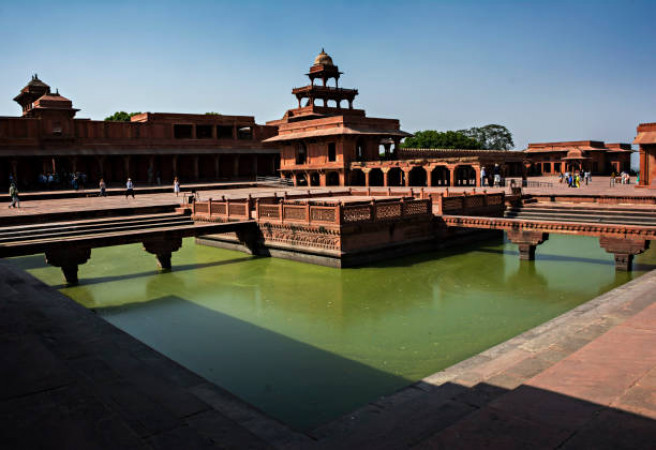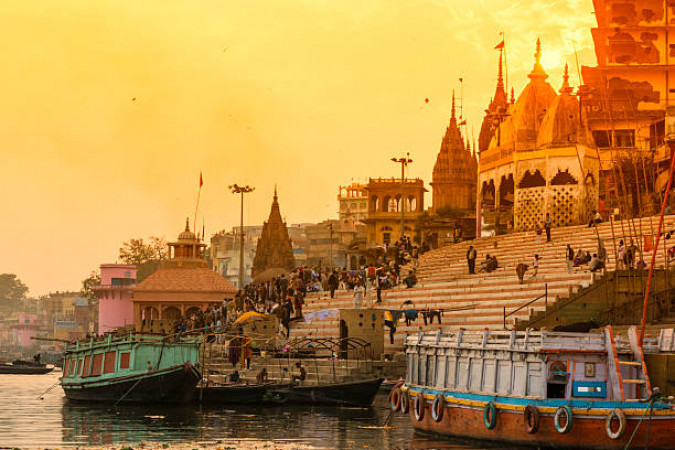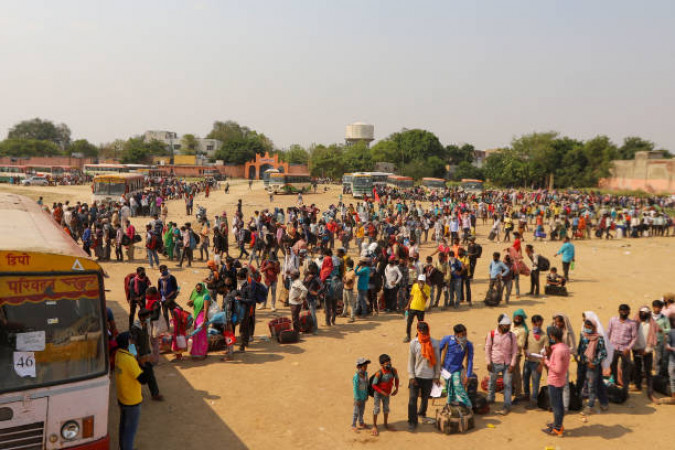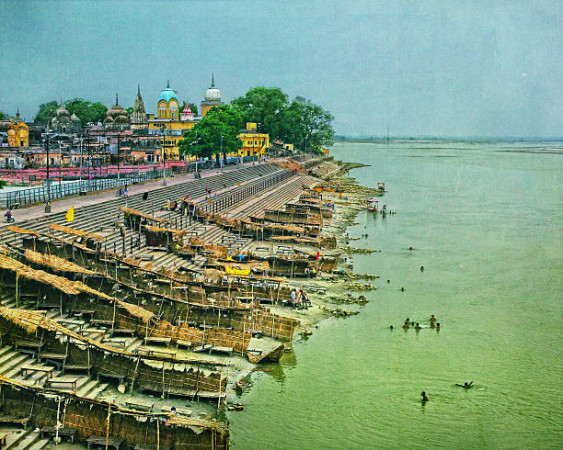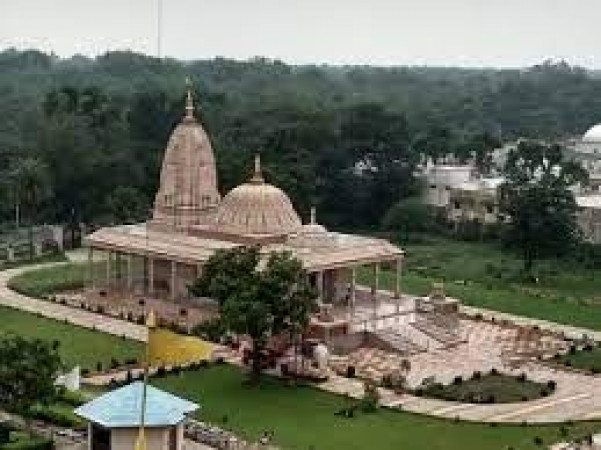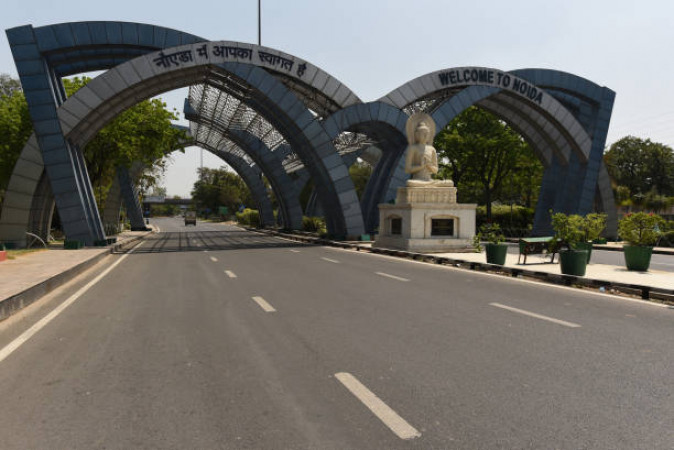Hi User
Navigation
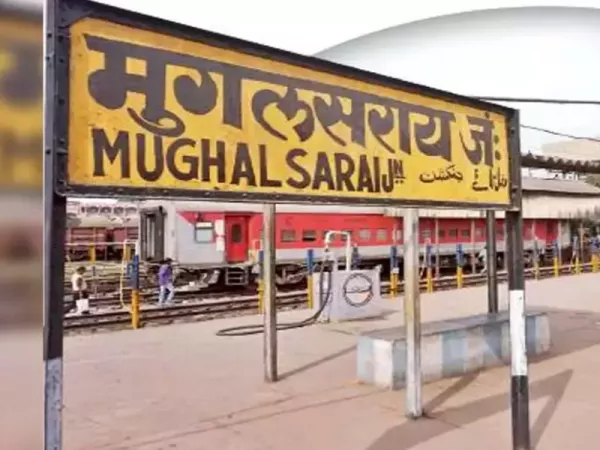
Mughalsarai Travel Guide
Mughalsarai, located in the state of Uttar Pradesh, India, holds great historical significance. Known for its strategic location on the Ganges River, it has been an important trading hub for centuries. The town was named after the Mughal Emperor Aurangzeb and served as a key stop on the Grand Trunk Road. Today, Mughalsarai is famous for being one of the busiest railway junctions in India.Top Attractions in Mughalsarai
- Sarnath - Explore the ancient Buddhist site where Lord Buddha gave his first sermon.
- Chandraprabha Wildlife Sanctuary - Discover the diverse flora and fauna in this natural reserve.
- St. Mary's Church - Visit the historic church built during the British colonial era.
- Ramgarh Tal - Enjoy a peaceful boat ride on the scenic lake surrounded by lush greenery.
- Chunar Fort - Marvel at the impressive fort overlooking the Ganges River.
Mughalsarai is Famous for
Being a major railway junction and an important historical trading post.Top Attractions in Mughalsarai
- Experience the spiritual vibes at Sarnath
- Witness the beauty of Chandraprabha Wildlife Sanctuary
- Step back in time at St. Mary's Church
- Relax by the serene Ramgarh Tal
- Explore the history at Chunar Fort
What's Great about Travelling to Mughalsarai?
- Rich historical and cultural heritage
- Off the beaten path destination
- Perfect for railway enthusiasts
What's Not So Great about Travelling to Mughalsarai?
- Limited modern amenities
- Not very tourist-friendly infrastructure
- Language barrier for non-Hindi speakers
Travel Tips for Mughalsarai
- Carry cash as ATMs may be limited
- Respect local customs and traditions
- Book train tickets in advance
Important Mughalsarai trip information
- Ideal Duration: A couple of days are sufficient to explore the main attractions.
- Best Time to Visit: The winter months from October to March offer pleasant weather.
- Nearby Airports and Railway Stations: The nearest airport is in Varanasi, while Mughalsarai Junction is a major railway station.
Help & Support
Call Us Now
+91-8069145442
FAQ's on Mughalsarai
Q1: What is the best time to visit Mughalsarai?
The best time to visit Mughalsarai is during the winter months from October to March when the weather is pleasant and suitable for exploring the city. Avoid the summer months from April to June when temperatures can soar. Make sure to check for any local events or festivals that may interest you before planning your trip.
Q2: Do I need a visa to travel to Mughalsarai?
Travelers to Mughalsarai do not require a visa as it is a city within India. However, if you are an international traveler, you will need a valid Indian visa to enter the country. Make sure to check the latest visa requirements and any special considerations based on your nationality before traveling.
Q3: What are the must-visit attractions in Mughalsarai?
Some of the must-visit attractions in Mughalsarai include the Mughalsarai Junction, the historic Chandraprabha Wildlife Sanctuary, Ramrekha Mandir, and the nearby city of Varanasi famous for its ghats and spiritual significance. Don't miss exploring the local markets and trying the street food to get a taste of the local culture.
Q4: Is Mughalsarai a safe place to travel?
Mughalsarai is generally a safe place to travel, but like any other destination, it's important to stay alert and take necessary precautions. Avoid isolated areas at night and be cautious of your belongings in crowded places. It is advisable to follow basic safety tips and respect local customs to have a hassle-free experience.
Q5: What is the local currency in Mughalsarai and can I use credit cards?
The local currency in Mughalsarai is the Indian Rupee (INR). While credit cards are widely accepted in hotels and larger establishments, it's recommended to carry cash for smaller transactions and in local markets. ATMs are also available for convenient cash withdrawals.
Q6: What is the local cuisine like in Mughalsarai?
Mughalsarai offers a variety of local delicacies influenced by North Indian cuisine. Some popular dishes to try include chaat, samosas, kachoris, and traditional sweets like jalebi and rabri. Vegetarian options are abundant, but you can also find non-vegetarian dishes like kebabs and biryanis in local eateries. Make sure to taste the famous "Banarasi paan" for a unique culinary experience.
Q7: What transportation options are available in Mughalsarai?
Mughalsarai is well-connected by road, rail, and air. You can easily access the city by train as it is a major railway junction. Local buses, auto-rickshaws, and taxis are available for convenient intra-city travel. Rental car services are also an option for exploring nearby attractions. Make sure to plan your transportation based on your itinerary and comfort preferences.
Q8: Are there any cultural norms or etiquette I should be aware of when visiting Mughalsarai?
When visiting Mughalsarai, it's important to respect local customs and traditions. Dress modestly, especially when visiting religious sites. Greet people with a "Namaste" and be mindful of local sensitivities. Avoid public displays of affection and always ask for permission before taking photographs, especially of locals. Understanding and appreciating the local culture will enhance your travel experience in Mughalsarai.
Q9: I am a travel agent. How can I buy travel leads of Mughalsarai?
Register yourself as a travel agent at agents.tripclap.com and then you can buy travel leads to Mughalsarai once your account is approved. For more details contact our support team at +91-8069186564 or support@tripclap.com
Certified
We accept (more)
Members of
Media Recognition
Trusted Partners
Award
Copyrights © TripClap. All Rights Reserved

